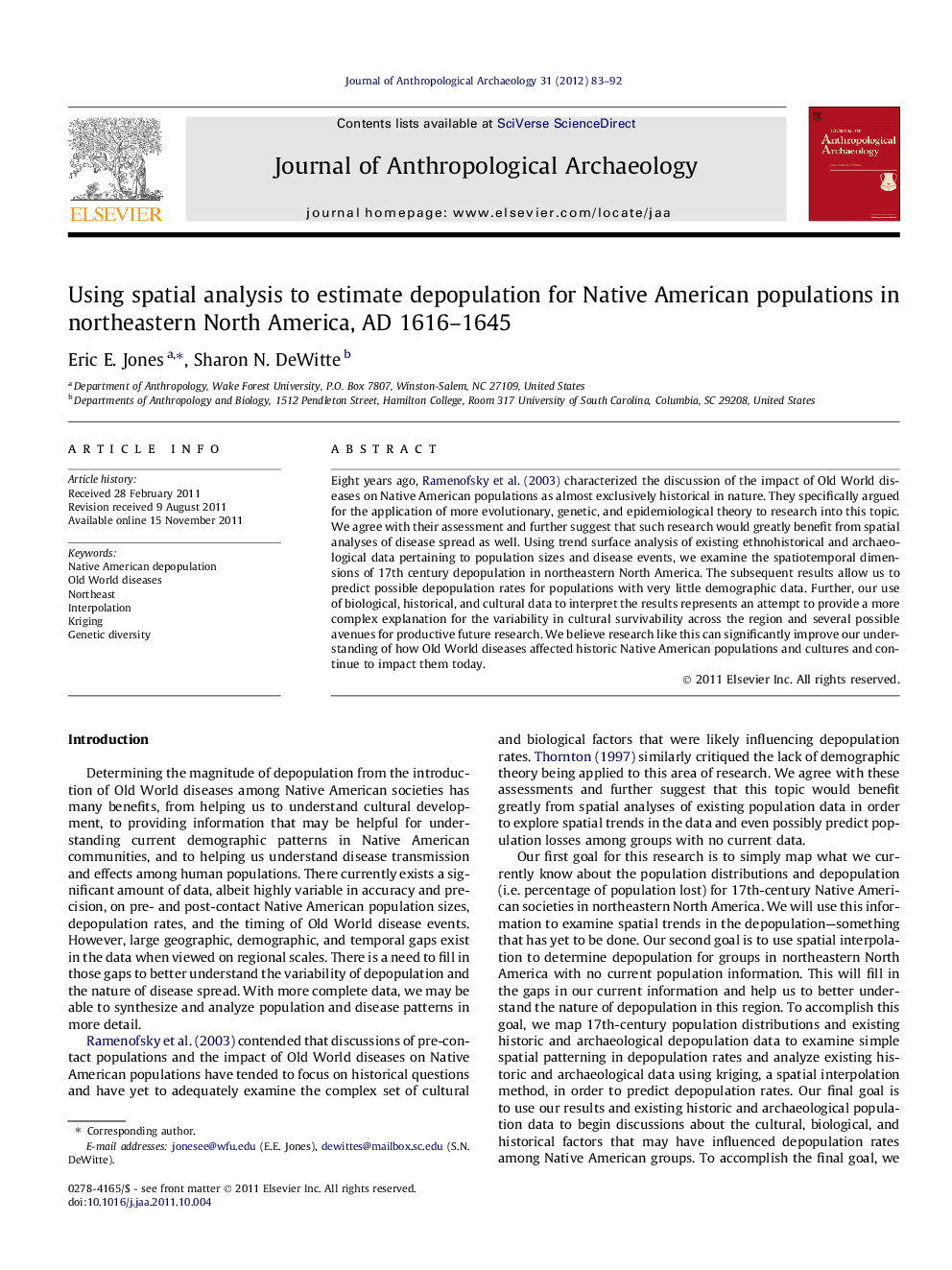| Article ID | Journal | Published Year | Pages | File Type |
|---|---|---|---|---|
| 1035012 | Journal of Anthropological Archaeology | 2012 | 10 Pages |
Eight years ago, Ramenofsky et al. (2003) characterized the discussion of the impact of Old World diseases on Native American populations as almost exclusively historical in nature. They specifically argued for the application of more evolutionary, genetic, and epidemiological theory to research into this topic. We agree with their assessment and further suggest that such research would greatly benefit from spatial analyses of disease spread as well. Using trend surface analysis of existing ethnohistorical and archaeological data pertaining to population sizes and disease events, we examine the spatiotemporal dimensions of 17th century depopulation in northeastern North America. The subsequent results allow us to predict possible depopulation rates for populations with very little demographic data. Further, our use of biological, historical, and cultural data to interpret the results represents an attempt to provide a more complex explanation for the variability in cultural survivability across the region and several possible avenues for productive future research. We believe research like this can significantly improve our understanding of how Old World diseases affected historic Native American populations and cultures and continue to impact them today.
► We examine ethnohistoric and archaeological data of 17th-century Native American depopulation. ► We used kriging to estimate depopulation among groups with no previous demographic data. ► We examine the patterns of depopulation using current archaeological, genetic, geographical, and historical information. ► Provides new depopulation data and a more complex explanation for the patterns of depopulation.
